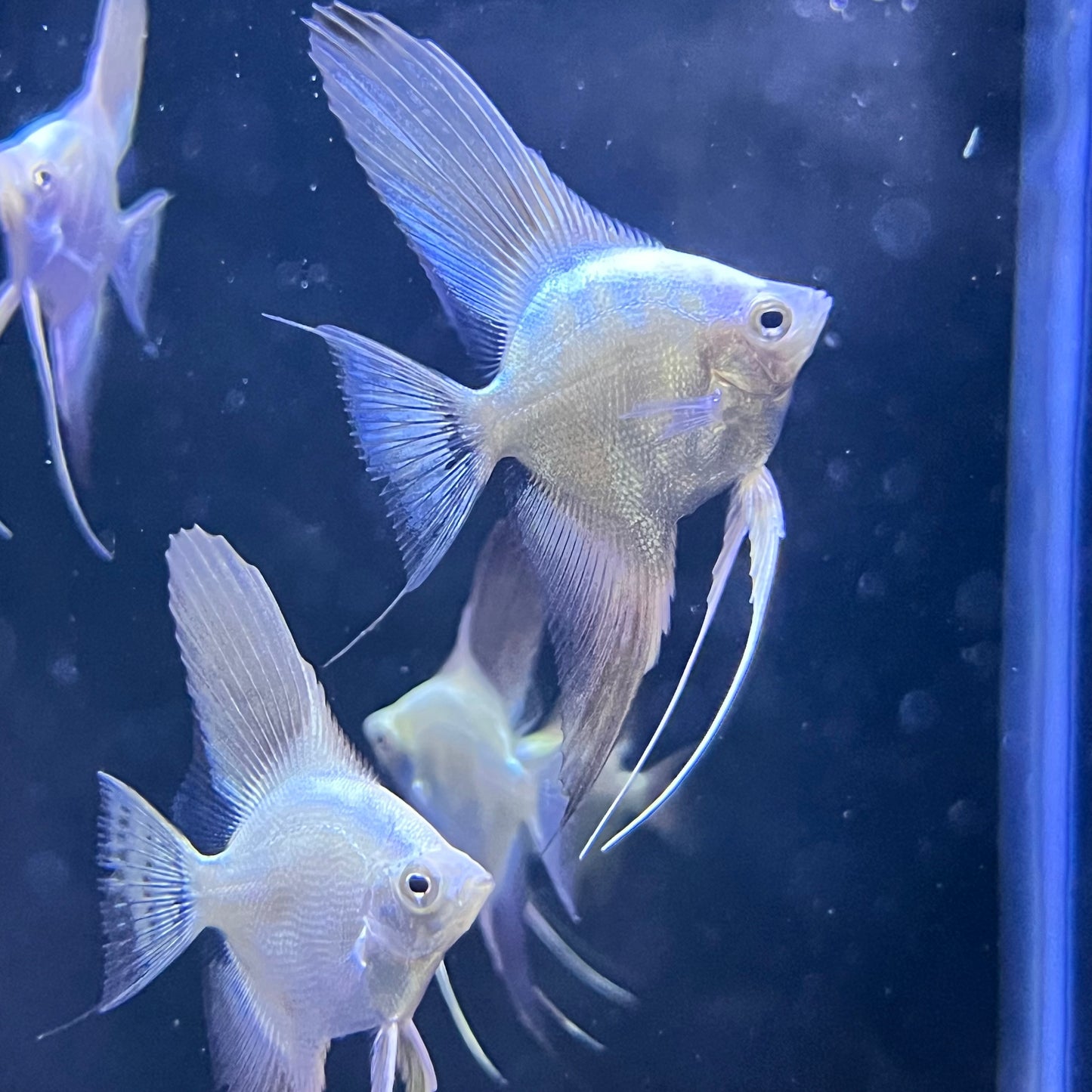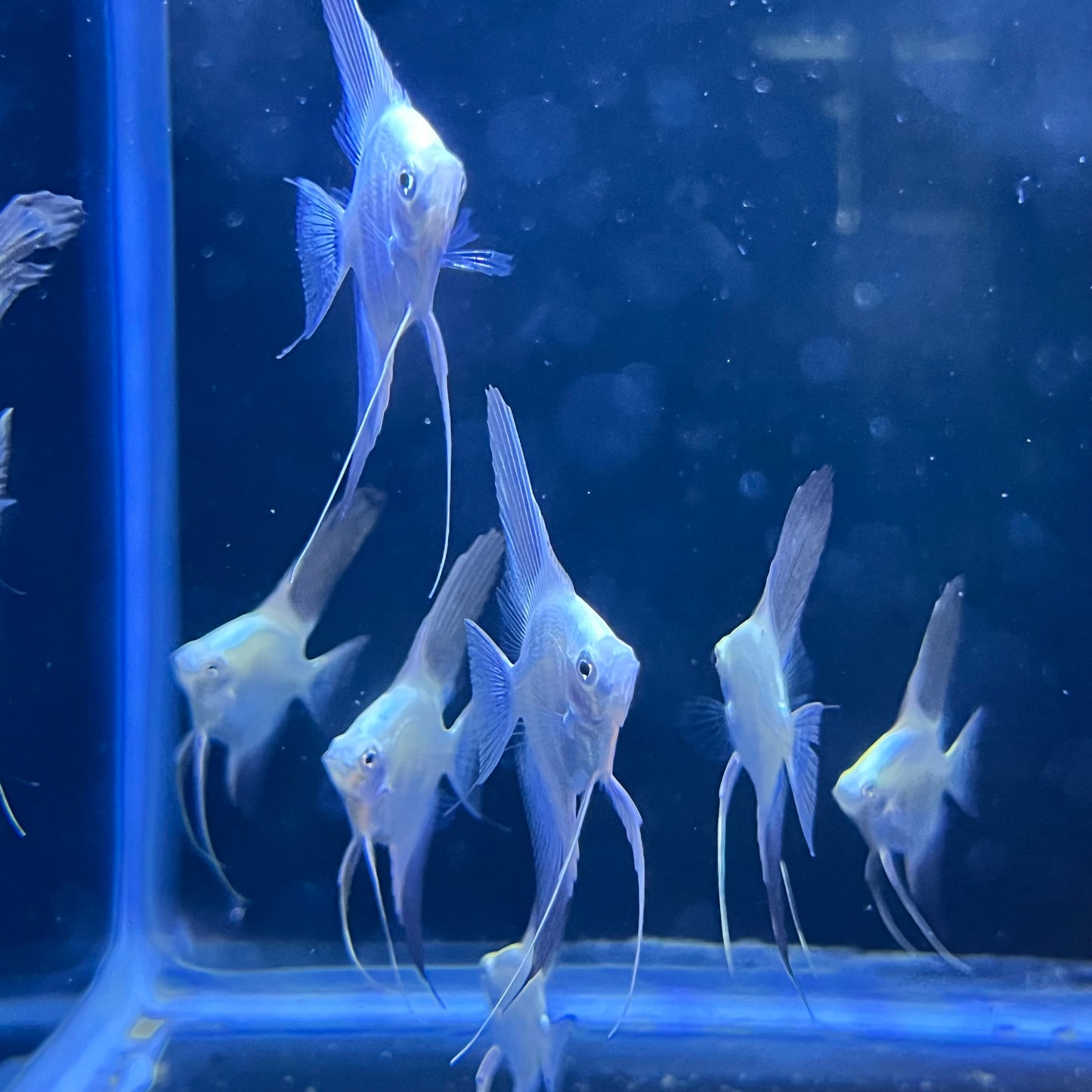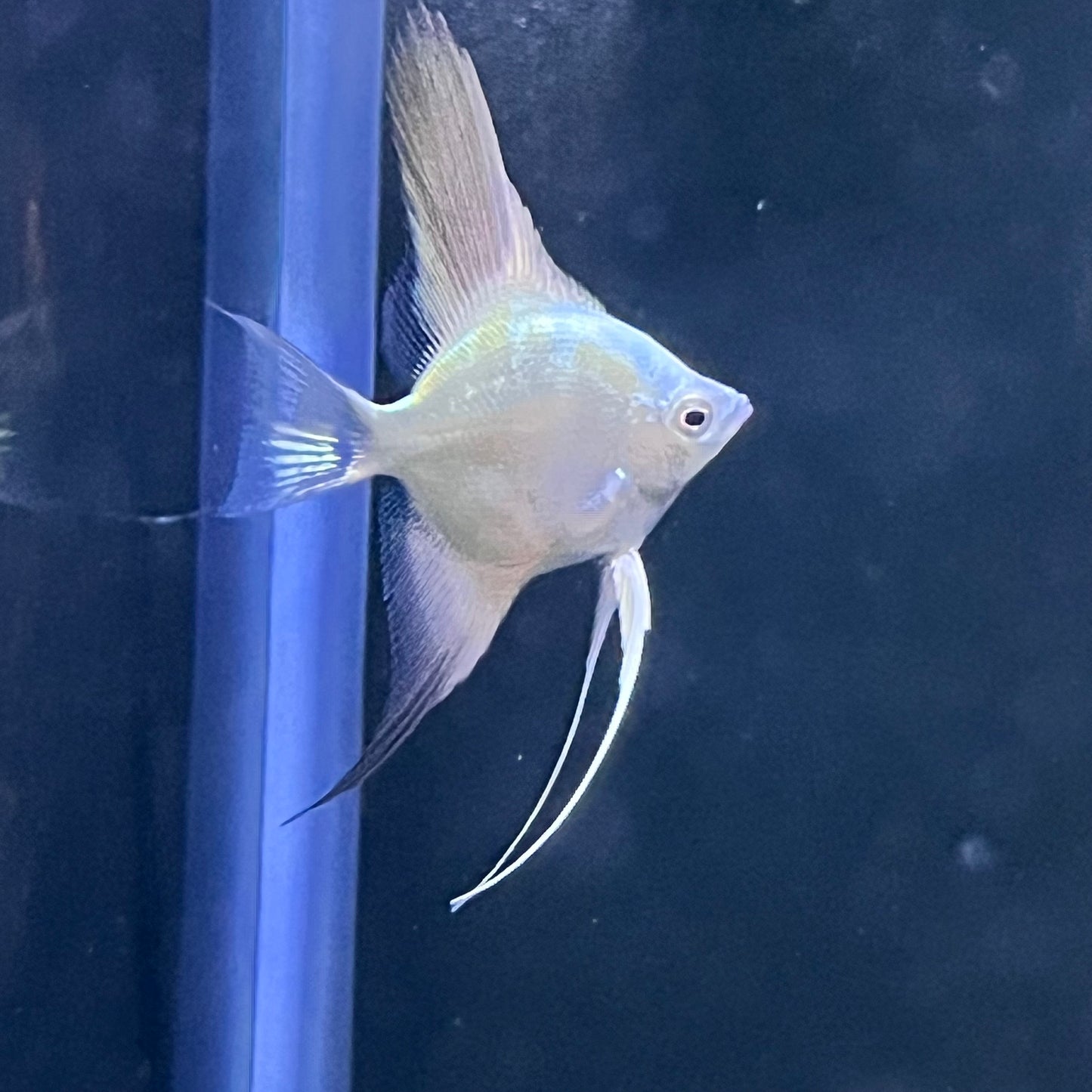Cams Rams
Bulgarian Seal Point Angelfish
Bulgarian Seal Point Angelfish
Couldn't load pickup availability
The Bulgarian Seal Point Angelfish is a beautiful and elegant freshwater fish, known for its graceful fins and a unique coloration that develops into adulthood. While it's a specific color variation, its care requirements are generally similar to other angelfish (Pterophyllum scalare). Here is a comprehensive care guide to help you provide the best environment for your Bulgarian Seal Point Angelfish.
Tank & Environment
-
Tank Size: Angelfish have a tall body shape, so the height of the tank is as important as the length and width. A minimum of a 30-gallon tank is recommended for a single angelfish, but a 40-55 gallon tank or larger is ideal for a pair or small group.
-
Substrate: Fine gravel or sand is a good choice.
-
Decor: Provide a well-planted aquarium with tall plants like Amazon Sword and Vallisneria. These plants offer a natural environment and provide hiding places. Add driftwood and rocks to create additional cover and territory markers.
-
Water Flow: Angelfish prefer gentle to moderate water flow. A good filter is essential to maintain water quality, but avoid strong currents that can stress the fish.
Water Parameters
Maintaining stable water parameters is crucial for the health of angelfish.
- Temperature: 76-82°F (24-28°C).
- pH: 6.5-7.5. Angelfish can tolerate a slightly wider pH range, but this is the optimal range for their health.
-
Hardness: Soft to moderately hard water (3-8 dGH). High mineralization can sometimes affect egg hatching if you plan to breed them.
Diet
Bulgarian Seal Point Angelfish are omnivores and should be fed a varied diet to ensure optimal health and coloration.
-
Staple Diet: High-quality flake or pellet food formulated for angelfish.
-
Frozen/Live Foods: Supplement their diet with protein-rich foods such as frozen or live bloodworms, brine shrimp, and daphnia.
-
Vegetable Matter: Include plant-based foods like spirulina-based flakes or blanched vegetables.
Behavior & Compatibility
- Temperament: Angelfish are generally peaceful but can be territorial, especially during breeding. They are semi-aggressive.
-
Tank Mates: Choose tank mates carefully. Suitable companions include other peaceful community fish of a similar size, such as:
-
Larger tetras (e.g., Black Skirt Tetras, Congo Tetras)
-
Gouramis
-
Corydoras catfish
-
Peaceful barbs
-
Rainbowfish
-
Other angelfish (in a large enough tank to allow for territory)
-
-
Avoid:
-
Fin-nippers (e.g., Tiger Barbs) that may damage the angelfish's long, flowing fins.
-
Very small, delicate fish that the angelfish may see as prey.
-
Dwarf shrimp and other small invertebrates.
-
Breeding
Angelfish are egg-layers and form monogamous pairs. If you wish to breed them, consider the following:
-
Pairing: The easiest way to get a breeding pair is to purchase a small group of juveniles (6 or more) and allow them to pair off naturally as they mature.
-
Spawning: Once paired, they will clean a flat, vertical surface (like a broad plant leaf, a piece of slate, or a special breeding cone) to lay their eggs.
-
Parental Care: The parents will guard and tend to the eggs and fry. Many captive-bred angelfish have lost their natural parenting instincts, and may eat their eggs.
Health & Maintenance
-
Water Changes: Regular water changes are essential to maintain stable and clean water, which is key to preventing disease and keeping your angelfish healthy. A 10-25% water change every 1-2 weeks is a good starting point.
-
Filtration: A good filter is necessary to remove waste and maintain water quality.
-
Observation: Regularly observe your angelfish for any signs of disease, such as lethargy, clamped fins, white spots (ich), or other abnormal behavior.
By providing a suitable environment, a balanced diet, and compatible tank mates, you can enjoy the majestic beauty of the Bulgarian Seal Point Angelfish for many years.
Share






